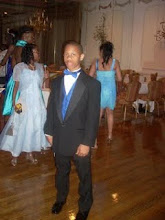Indian Customs
While to many people raised in the west, this might sound odd. It is important to remember that in Indian society an arranged marriage is seen as an act of love. Since marriage is one of the most important decisions a person will ever make and because divorce is not accepted among most Indians, it is imperative that the marriage choice is carefully thought out and planned. How can a young person make such an important decision on his/her own? Instead, the family (usually the parents) look for certain traits in a marriage partner. Some desirable traits looked for in both male and female are: matching levels of education, matching cultures, close parental cities, matching religions, and matching vegetarians/non-vegetarians just to name a few.
Places to visit : All over India
Duration : One-Two Days, Varies Regionally
Holi is probably the second most celebrated Indian Hindu holiday. It is a time of great joy and color. It is known as the most lively Indian holidays, in short, it is the Mardi Gras of India, minus the nudity of course! It is observed all over India, especially in the North. It marks the harvesting of winter crop (Rabi) when wheat corns get ripened and turn golden brown. It heralds the end of winter and the beginning of spring. For many westerners and/or Christians, Holi even shares some characteristics of Easter. Not only does it come close together (usually a day apart) but Easter is considered a time of colorful spring celebrations as well. However, that is where the similarities end. In fact, while it is celebrated in a similar fashion all over India, there are so many different legends and stories associated with it regionally that you are bound to get different stories about Holi in just about every region.
CELEBRATIONS
People celebrate this festival of colors joyously with friends and relatives. People come out wearing pure white clothes and gather together in a common place where they "play Holi". People throw colored water with pichkaari (a traditional device to spray colored water from a distance keeping oneself safe), gubbare (balloons filled with water to throw on others from a distance) and gulal (colored powder) at each other and make merry. Singing and dancing add to the gaiety of the occasion. Playing Holi begins early in the morning and continues through the day.
Rituals
Usually the night before Holi, a huge bonfire is built. It is said to cleanse the air.Traditional delicacies are prepared in advance and served while playing Holi. Families, friends, and neighbors get together to enjoy this festival of colors.
Farmers celebrate Holi by offering their first crop to the Fire God Agni.
The drinking of bhang is also a common practice, though if there is any religious reasons behind it, they are now obscure. Bhang is an interesting concoction of grass of the opium plant mashed and mixed with milk or sweets. Some families also give their children these drinks but most reserve these for the adults and exercise caution.




